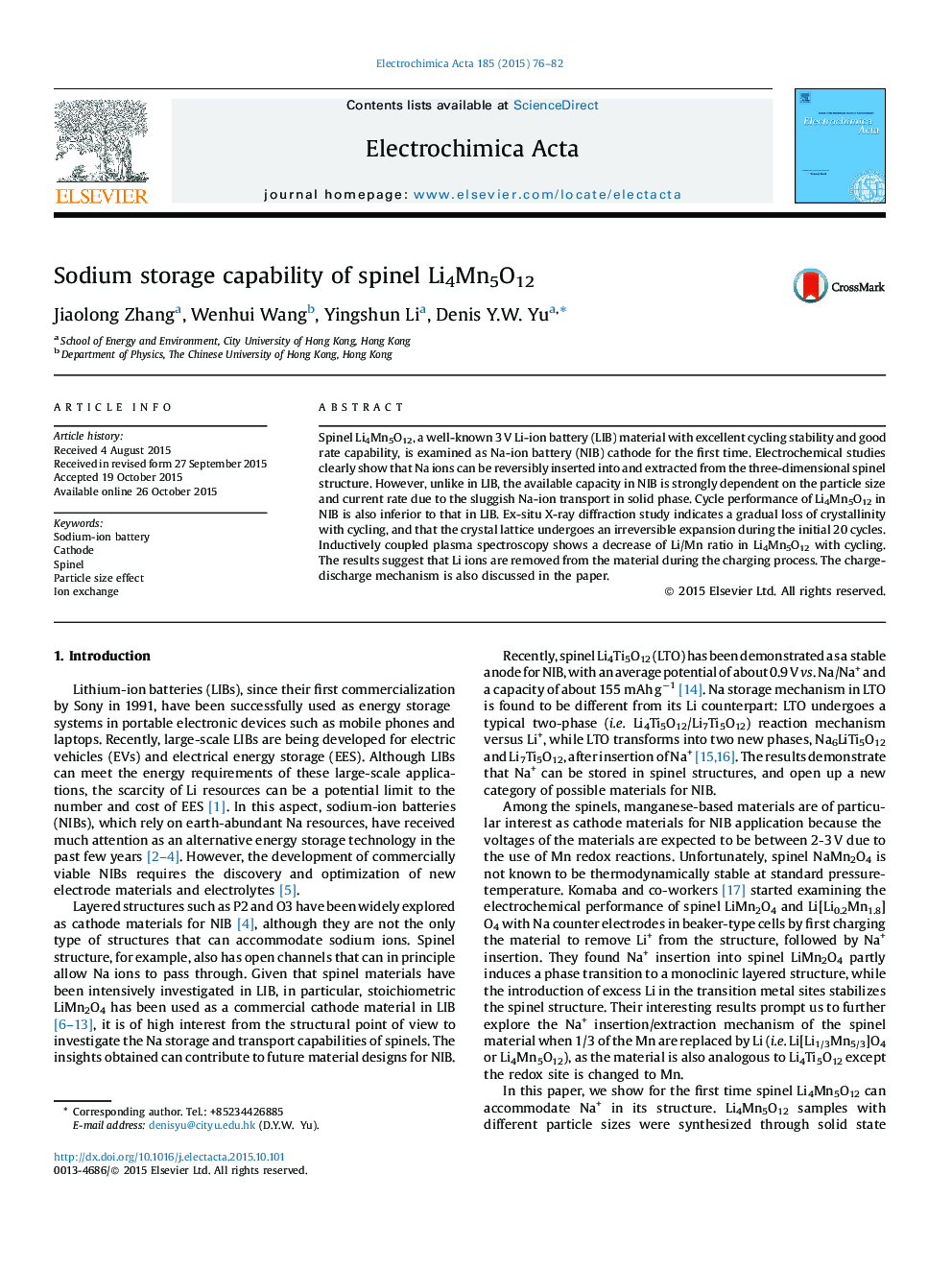| Article ID | Journal | Published Year | Pages | File Type |
|---|---|---|---|---|
| 183434 | Electrochimica Acta | 2015 | 7 Pages |
•Electrochemical behavior of spinel Li4Mn5O12 is examined in Na-ion battery.•A capacity of 120.7 mAh g−1 is obtained during the first sodiation process.•Na storage performance is found to be strongly dependent on particle size.•Ion-exchange between Li ions and Na ions occurs in Li4Mn5O12 structure upon cycling.•Loss of crystallinity with cycling, leading to capacity fading.
Spinel Li4Mn5O12, a well-known 3 V Li-ion battery (LIB) material with excellent cycling stability and good rate capability, is examined as Na-ion battery (NIB) cathode for the first time. Electrochemical studies clearly show that Na ions can be reversibly inserted into and extracted from the three-dimensional spinel structure. However, unlike in LIB, the available capacity in NIB is strongly dependent on the particle size and current rate due to the sluggish Na-ion transport in solid phase. Cycle performance of Li4Mn5O12 in NIB is also inferior to that in LIB. Ex-situ X-ray diffraction study indicates a gradual loss of crystallinity with cycling, and that the crystal lattice undergoes an irreversible expansion during the initial 20 cycles. Inductively coupled plasma spectroscopy shows a decrease of Li/Mn ratio in Li4Mn5O12 with cycling. The results suggest that Li ions are removed from the material during the charging process. The charge-discharge mechanism is also discussed in the paper.
